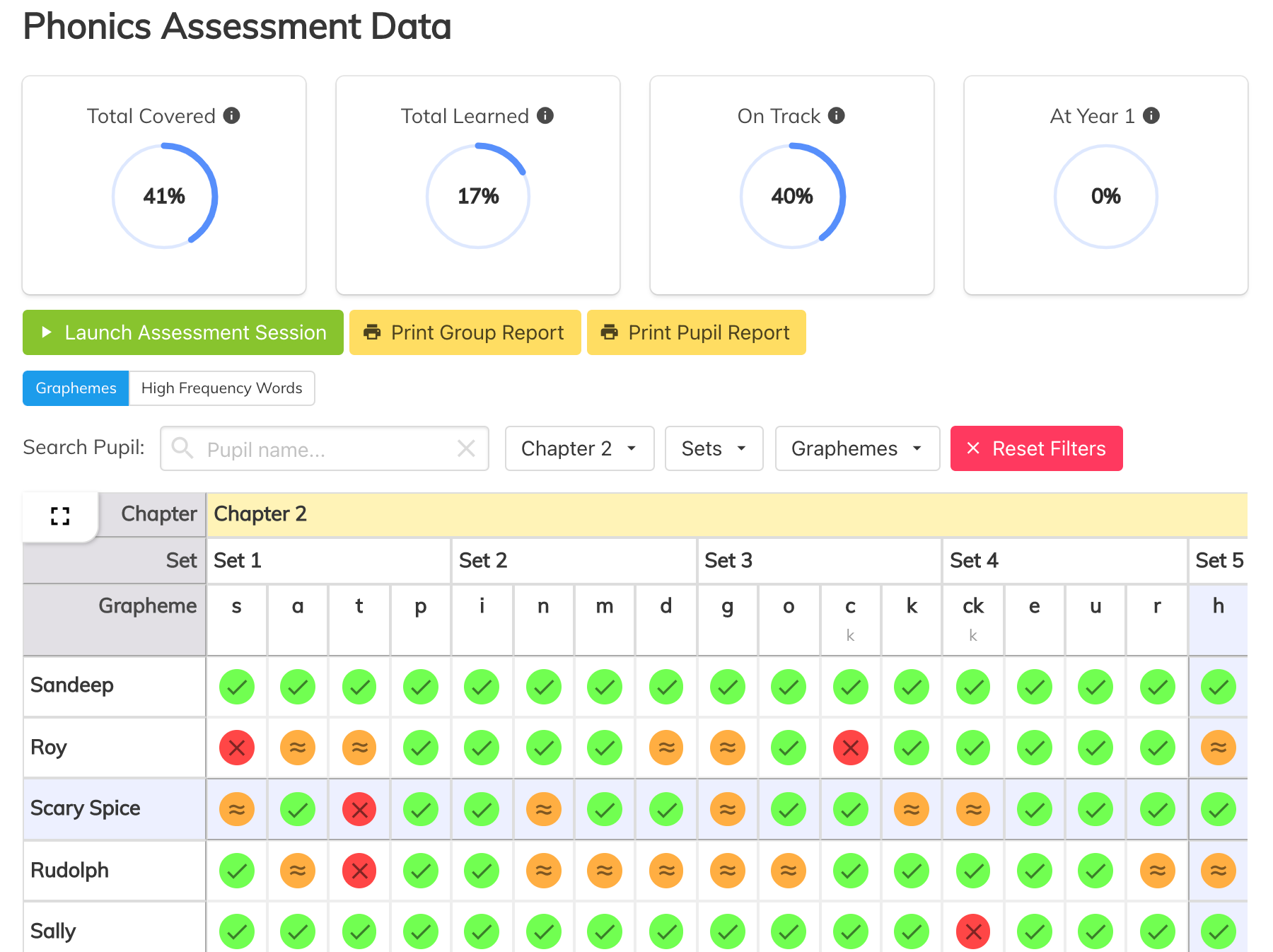PHONICS SHED SUPPLEMENTAL
The Phonics Shed Supplemental package provides supporting tools and resources for Phonics Shed Core or any other core phonics curriculum.
What’s Included?
- Phonological and Phonemic Awareness Lessons (PPA)
- Interventions
- Phonics Shed Play and Assess: Includes online games, digital flashcards and other tools, assessments, and progress monitoring
Phonics Shed Core covers vital pre-reading, speaking, and listening skills and over 110 phoneme-grapheme correspondences (PGCs) that span Pre-K through 2nd grade. Each grade has a corresponding chapter; Pre-K is Chapter 1, Kindergarten is Chapter 2, Grade 1 is Chapter 3, and Grade 2 is Chapter 4. Every PGC covered throughout each chapter is represented with a specific character and has its own lesson and activities for that specific PGC.
Phonics Shed Supplemental includes short intervention lessons for all PGCs. Grades Pre-K through 1 also have phonological and phonemic awareness (PPA) lessons that provide additional support. Phonics Shed Supplemental also includes digital assessment and teaching tools plus extended reporting on our Phonics Shed games.
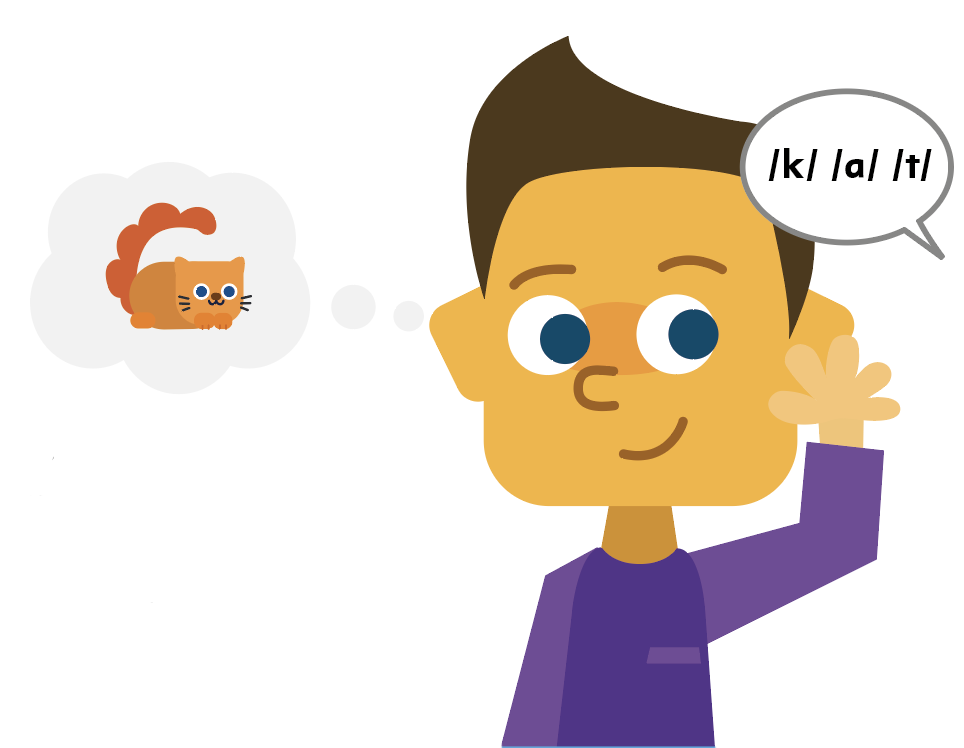
Phonological and Phonemic Awareness (PPA)
The PPA curriculum covers all of the essential phonological awareness and phonemic awareness skills that are needed to develop a strong foundation for beginner and emergent readers. Each 10-15-minute lesson focuses on the sounds associated with the phonics skill of the day, and each lesson wraps up by using flashcards that introduce the character that represents the letter name(s) and letter shape(s) to form the letter-sound connection. In addition, an action connected with that character is taught, adding a multi-sensory component to the learning. See each grade level’s guidance to learn more details about the curriculum.
Interventions
The interventions in this program are a condensed version of the core curriclum’s daily lesson plans and resources. The lessons include multi-sensory instruction and are designed to be quick, lasting only 10 minutes. They are intended for small groups or 1:1 reinforcement of learning. For Chapters 2-4, there is one intervention lesson for every PGC covered and several for the pre-reading, speaking, and listening skills in Chapter 1. The Chapter 1 interventions can be used to support children who are struggling with phonological awareness and other foundational skills. See the Intervention Guidance to learn more details about the curriculum.
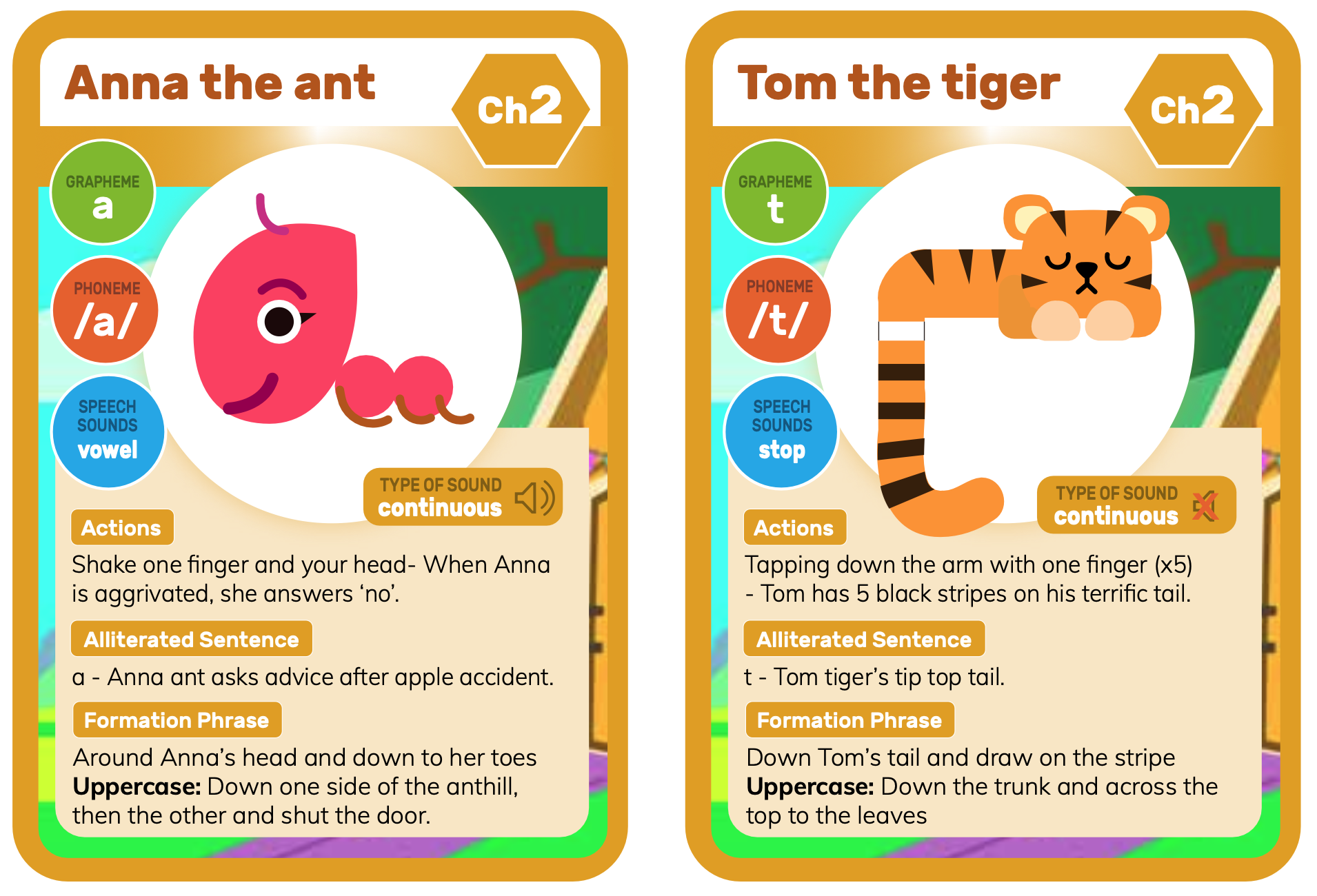
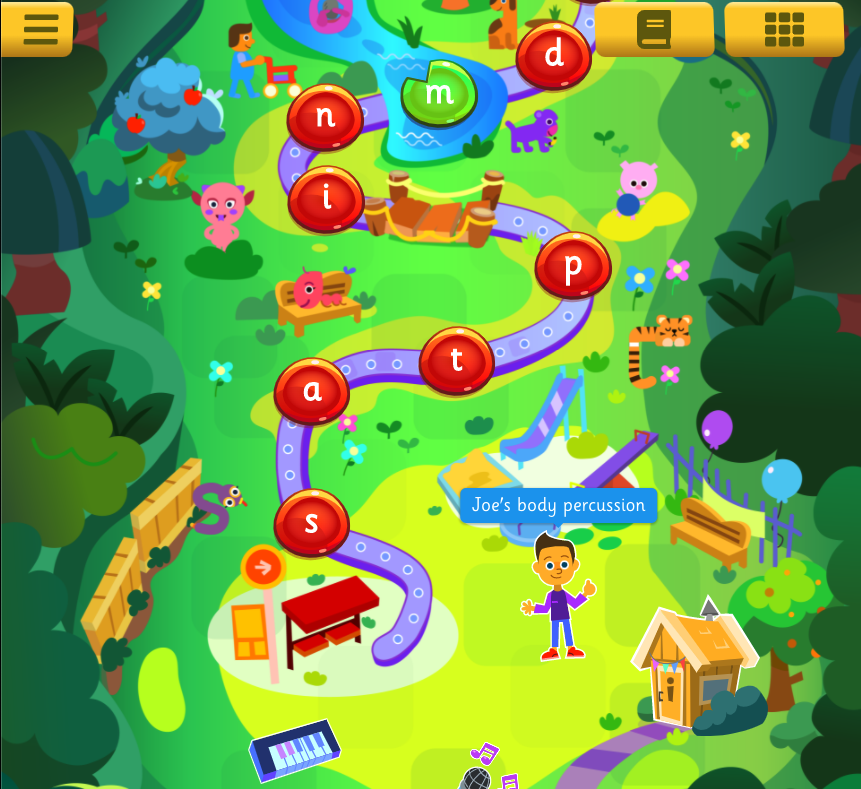
Phonics Shed Play and Assess
Phonics Shed provides engaging supplemental practice, insightful supportive data, and essential assessment tools. Educators have the ability to assign games and assessments for specific PGCs and easily monitor progress. Phonics Shed Digital practice and assessments can easily integrate with other phonics programs and progressions as a supplemental resource to help fill gaps as needed, and provide constructive insights through intelligent data collection. Phonics Shed Digital focuses on isolated phoneme/grapheme pairs and delivers targeted phonics practice. This powerful online tool is crucial in the ability to collect and use insightful data to recognize patterns and address deficits by providing personalized, targeted practice.
Using Phonics Shed Supplemental
To enhance the development of robust phonemic awareness, it is recommended to utilize a combination of 10-minute interventions and 15-minute PPA lessons. Phonics Shed adheres to a speech-to-print approach, so it is recommended to use a specific PGC’s PPA lessons before delivering the matching intervention. The PPA lessons primarily focus on auditory aspects, with a small incorporation of print elements to conclude the lesson. On the other hand, the interventions begin with a sound-oriented approach, gradually integrating additional print activities that involve identifying, reading (decoding/segmenting), and writing (encoding/blending) target graphemes throughout each lesson.
Combining both types of lessons ensures a more comprehensive supplemental phonics experience that encompasses essential components crucial for developing early reading skills, all in under 30 minutes! However, if you choose to use only the interventions, each lesson begins by introducing the character (and the phoneme it represents) through an alliteration phrase or example words with the target sound. This ensures that children are first exposed to the sounds before print is introduced.
Each intervention and PPA lesson focuses on a specific phoneme-grapheme correspondence (PGC) that aligns with our core phonics program. Since each phoneme-grapheme pair has a specific lesson dedicated to it, the supplemental program can also easily pair with other phonics progressions or programs if needed.
Both the interventions and PPA lessons require minimal resources and can be easily adapted to be covered more than once, if further reinforcement is needed. The supplemental lessons primarily make use of our character flashcards, which are offered as a digital tool or can be purchased separately as physical cards. All lessons follow a set structure to make them easy to follow for both children and adults. Since the interventions are intended for small groups or 1:1, they would best be utilized during a centers or rotation format, which also allows for more differentiated instruction if needed. PPA lessons can be delivered whole group or in small group settings. Please see each program’s corresponding guidance to learn more about structure and implementation.
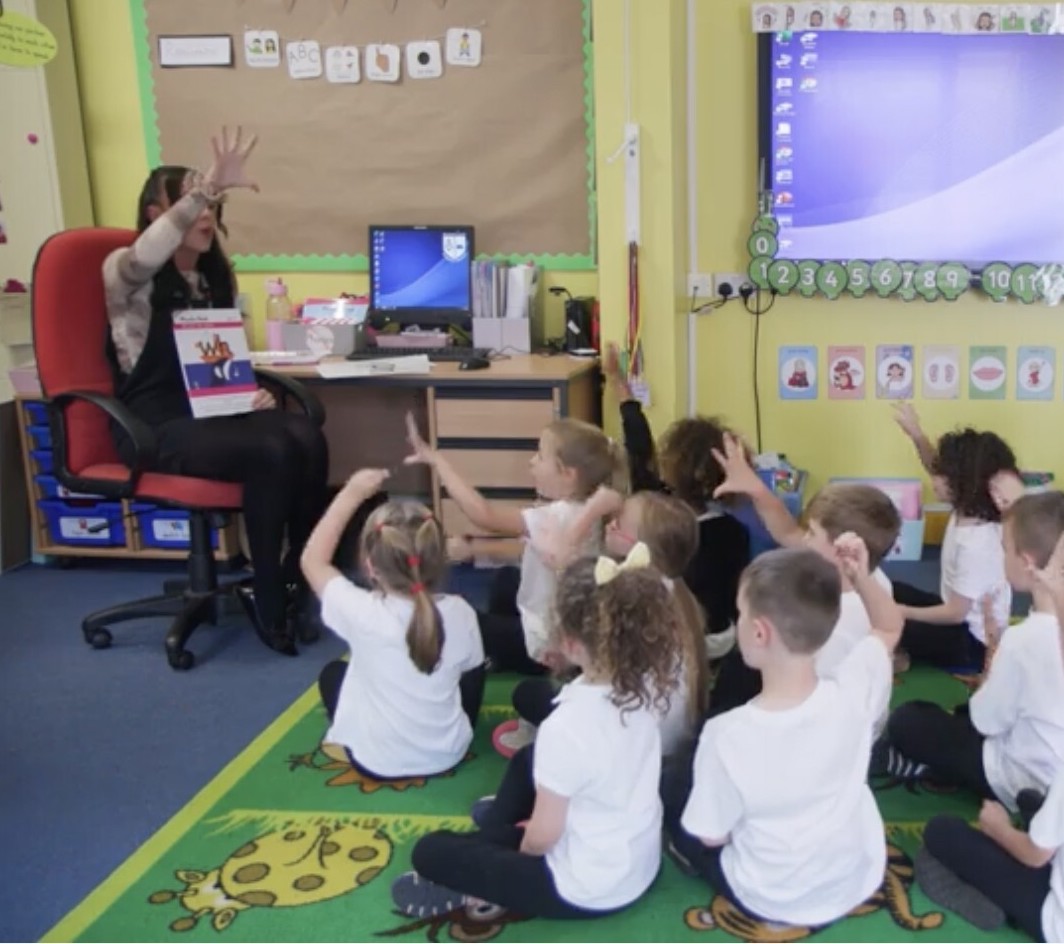
Play
Phonics Shed Digital grants access to targeted phonics practice through a variety of different games to support purposeful play. Games incorporate practice with identifying and distinguishing sounds, work at your own pace learning, blending and segmenting sounds, identifying target graphemes/phonemes, matching sounds to graphemes/words, and some spelling. In addition, teachers have access to a digital version of the phoneme/grapheme and high-frequency word flashcards to practice on the screen with students.
Once logged in, children navigate their way through the interactive Phonics Shed Garden completing games as they travel from pre-reading skills sequentially through more challenging phoneme-grapheme correspondence activities. Many games include phonological awareness elements (from Phonics Shed Core Curriculum, Chapter 1) that involve exploring, identifying, and distinguishing sounds from one another, such as our Soundboard tool. The rest of the games involve various ways of practicing blending, segmenting, and identifying the 110 phoneme/grapheme pairs in isolation and within words.
Games support the learning progression of each phoneme-grapheme correspondence in a variety of ways. Children can access the games as part of in-class phonics teaching, be incorporated into a rotation of centers, and/or be used as independent online activities, which can be played in school or at home.
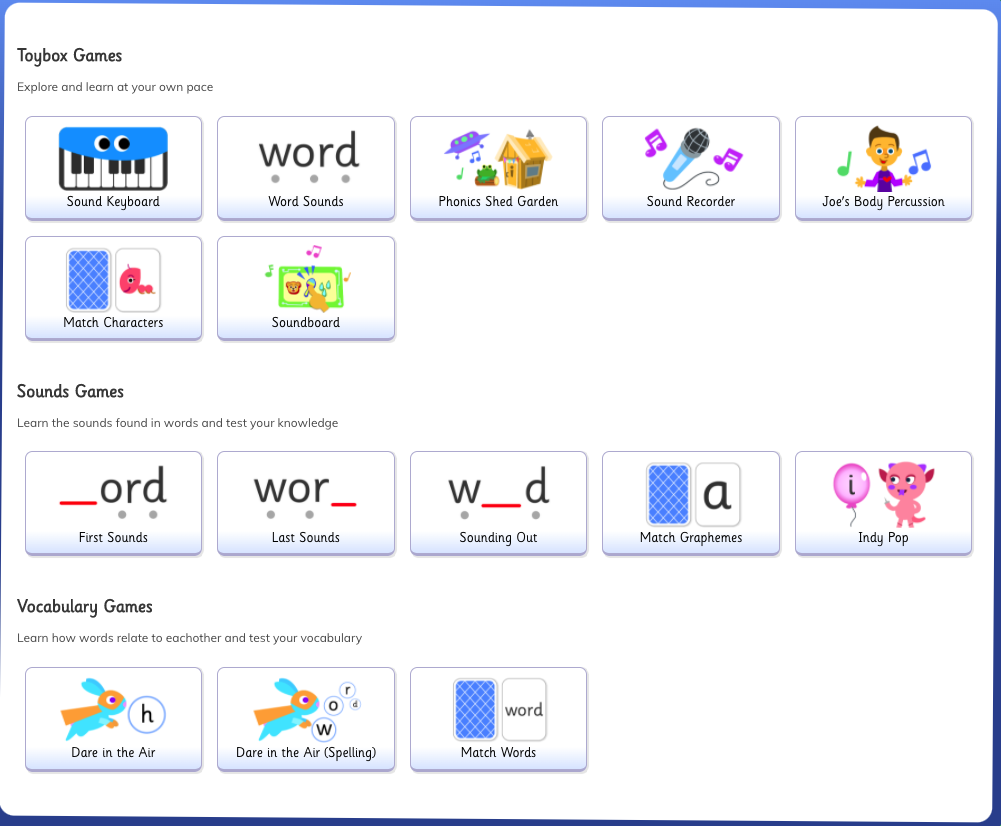
Assessment & Data
The Phonics Shed data system assists to inform your planning, enabled by the flexible and targeted nature of the Phonics Shed program. Because the phoneme/grapheme pairs are structured to practice in isolation, you can easily use our progression to inform your instruction, or pick and choose based on the needs of your children.
We provide two summative assessment tools in the form of an online flashcard screening tool. One option allows you to assess phoneme/grapheme pairs in isolation, and the other allows you to assess phoneme/grapheme pairs within words. At the relevant points in the children's progression, teachers can use our flashcard assessment tool to screen children against the phoneme/grapheme pairs they have learned.
Our digital tracking system allows you to note the conclusions drawn from observational assessments, quickly and effectively, and our games provide performance data that help to provide more clarity of students' abilities. The games track each child's performance and give teachers additional information on their activity and acquisition of skills.
These elements are combined in the children's online data dashboard, allowing teachers to see, at a glance, an overview of a group or an individual child's progress. The dashboard allows teachers to have an overview of each child's assessment and proficiency data, which they can add to or adjust manually, if they have screening data from outside of our system. The grid shows a snapshot of competence versus individual phoneme/grapheme pairs and allows for easy identification of children needing further support as well as whole-class review lessons as needed.
